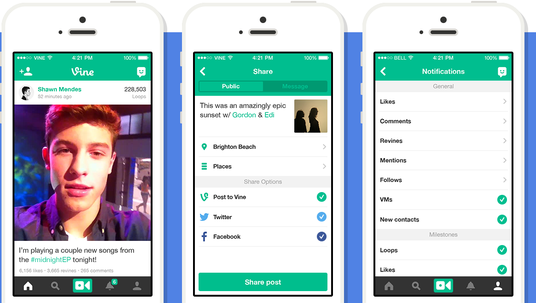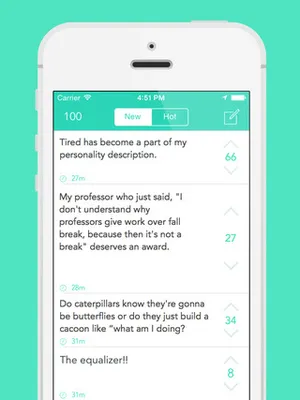From Vine to Friendster, a look back on defunct social networking sites we wish still existed
- Social media platforms like Youtube primarily serve as a communication channel to share ideas and information, whereas social networking sites focus on creating and maintaining relationships.
- Since social networking sites began in 1995, we’ve seen the rise and fall of countless social networks for varying reasons.
From Yik Yak to Friendster, there have been plenty of short-lived social media sites that were popular one day and gone the next.
Only a handful of social media platforms have dominated our screens in recent years, but a wave of uncertainty and weakening trust in major tech companies have inspired some consumers and creators to seek out new, and even revamp old, networks.
Amid the fallout of Elon Musk’s takeover of Twitter, now called X, and desperate pleas for better platforms, we look back on six notable defunct social networking services, which some readers have probably been on and wish never went away (we're looking at you, Vine).
Here are a few of the most memorable and significant social platforms born in the late '90s and early 2000s.
New Twitter logo:Elon Musk drops bird for black-and-white 'X' as company rebrands
Six Degrees
What was Six Degrees? The social networking website and blogging platform Six Degrees, founded by Andrew Weinreich in 1996, is considered by many to be the first true social networking site, according to CBS News. The website featured some of the social media hallmarks we see today: profiles we can post on, friend lists, school enrollment, the ability to send and receive messages and more.
Is Six Degrees still accessible? Six Degrees' domain is still accessible.
How long did Six Degrees last? 1997-2001
Why did Six Degrees shut down? According to CBS News, a lack of good Internet connection limited the website’s ability to grow. According to Britannica, SixDegrees.com claimed to have attracted more than three million users by 2000 but failed to monetize its popularity into revenue and collapsed when the dotcom “bubble” burst, along with countless other dotcoms.
AOL Instant Messenger (AIM)
What was AIM? Created as an extension of AOL's desktop software, AOL Instant Messenger (AIM) launched in 1997 from America Online, although AIM had been a part of the AOL browser as early as 1988 in the form of lists of acquaintances that let users know when others were online, according to Britannica. AIM was a staple of personal computers and instant messaging helped revolutionize the way people interact online.
“Most teenagers accessed AIM through a centrally located family computer, but the platform provided a layer of privacy many teens craved,” writes Michelle Delgado for Smithsonian Magazine.
When did AOL Instant Messenger stop? AOL shut AIM down in 2017.
Remember Vine?These social networking sites defined the past decade
What replaced AOL Messenger? In 2018, a different company announced the reincarnation of the popular network through AIM Phoenix. Since it's no longer affiliated with AOL, accounts and buddy lists from official AIM services are not carried over, according to the company’s website.
In 2022, a “team of nostalgic programmers” reverse engineered AOL 3.0 and put their version online, complete with low-fi graphics, chat rooms and the original noises, “for everyone to enjoy,” Vice reported. It’s called RE-AOL.
Why did AIM shut down? The service's popularity declined as social networking sites like Facebook and Twitter took over the online social scene. When AOL officially shut down the service, it cited a "cultural shift" in the way people communicate. AIM couldn't make the seamless transition to mobile, where most users rely on instant messaging services.
Read USA TODAY's coverage about the closure of AOL Messenger from the time.
Friendster
What was Friendster? A pioneer in social networking, Friendster took on Six Degrees but had more of a dating spin attached to it, which would help set up people with friends in common and allowed users to set status and mood updates.
Who created Friendster? Friendster was founded by Jonathan Abrams, a Canadian computer programmer.
How long did Friendster last? Friendster launched in March 2002 and went through different iterations within the same decade. A group of internet archeologists reported on in Wired, published a paper which analyzed Friendster's demise. The group found that Friendster was more or less dead in the U.S. by 2006 but maintained a relatively strong following in southeast Asia for a few more years. Friendster relaunched itself as a gaming site in 2011 and deleted all user blogs, photos, comments and groups that same year, according to Rolling Stone.
Why did Friendster shut down? According to a 2018 Wired magazine article, Friendster was burdened by technical glitches and a strong competitor — Facebook.
More:GLAAD report says Twitter is the 'most dangerous' social media platform' for LGBTQ users
Vine

What was Vine? While initially mocked when it was announced in 2013 for offering only six-seconds of video time, the service quickly found a following. It produced its own stars such as King Bach (real name: Andrew Bachelor), Nash Grier and Lele Pons, and was a medium to quickly share clips of highlights or big events. The time restraint was a creative challenge for users.
Who created Vine? Rus Yusupov, Dom Hofmann and Colin Kroll founded Vine. Yusupov sold it to Twitter for a reported $30 million in 2012, before the service had even launched to the public.
How long did Vine last? Twitter announced it would shut down Vine in 2016. It would keep creators' content online "because we (Twitter) think it’s important to still be able to watch all the incredible Vines that have been made," the company said in a Medium post at the time. However, as of 2019, the full Vine archive was no longer available, Vine's website states. Content that remains on Vine can only be located by using the unique URL of the Vine account, or Tweet URL if the Vine was shared to Twitter, if it has not been deleted or removed.
Why did Vine shut down? According to the Verge, Vine was fun but could not make enough money to stay alive. It was losing popularity to apps like Instagram, which added new features at a faster rate. Twitter shut Vine down hours after announcing layoffs of 9% of its staff, aimed at cutting costs and getting the company closer to profitability.
Read USA TODAY's coverage about the closure of Vine from the time
Yik Yak

What was Yik Yak? Yik Yak, the once popular and ultra controversial app favored by college students and high schoolers, started in 2013 as a way to connect people on campus. It quickly rose to join the top 10 most-downloaded apps. The feature of being anonymous, an initial selling point, created issues for the Atlanta-based company, which grew to $400 million in market value at its peak.
How long did Yik Yak last?After a failed attempt to sell the app, co-founded by Tyler Droll and Brooks Buffington, Yik Yak shut down in 2017.
Why did Yik Yak shut down? The ability for users to remain anonymous were cited in complaints about bullying, harassment and threats. Yik Yak was banned at several schools, while others were forced to shut down for days because of anonymous threats made against students on Yik Yak.
By 2016, Yik Yak had dropped out of the top-1,000 apps downloaded in the App Store. The company tried several things to get students back on the Yik Yak train, but failed. By the end of 2016, big job cuts were announced.
Read USA TODAY's coverage about the closure of Yik Yak from the time.
Vote on the social media network you wish still existed
Contributing: Brett Molina, Eli Blumenthal, Jefferson Graham, Dalvin Brown, USA TODAY
Disclaimer: The copyright of this article belongs to the original author. Reposting this article is solely for the purpose of information dissemination and does not constitute any investment advice. If there is any infringement, please contact us immediately. We will make corrections or deletions as necessary. Thank you.







